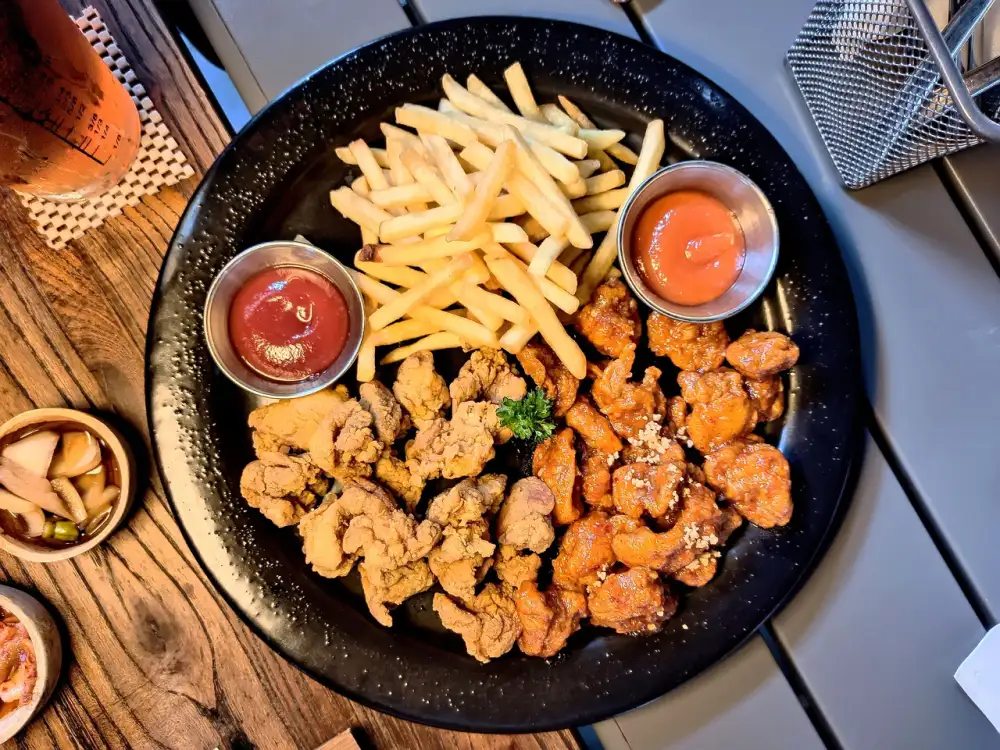Spice Up Your Dishes with Gochujang Sauce: A Korean Culinary Delight!

Gochujang sauce is a staple in Korean cuisine, known for its rich umami flavor and spicy kick. It is a fermented chili paste made from red chili powder, glutinous rice, fermented soybeans, and salt. This versatile condiment adds depth and complexity to dishes, ranging from soups and stews to marinades and dipping sauces. Gochujang's unique blend of sweet, savory, and spicy notes makes it a beloved ingredient in Korean cooking, elevating the overall taste profile of any dish it is added to.
History and Origins of Gochujang
Gochujang sauce has a rich history dating back to the early days of Korean cuisine. It is believed to have originated in the 18th century during the Joseon Dynasty. The fermentation process used in making gochujang was influenced by techniques brought from China, but over time, Koreans developed their own unique recipe using locally sourced ingredients like red chili pepper powder, glutinous rice, fermented soybean powder (meju), and salt. Gochujang quickly became a staple in Korean households and remains an essential condiment in Korean cuisine today.
Key Ingredients in Gochujang Sauce
Gochujang sauce is a staple in Korean cuisine, known for its rich and complex flavor profile. The key ingredients in gochujang include red chili powder, glutinous rice powder, fermented soybean powder (meju), salt, and water. The red chili powder provides the sauce with its signature spicy kick, while the glutinous rice powder adds a subtle sweetness and helps thicken the consistency. Fermented soybean powder contributes to the umami depth of flavor, and salt balances out the overall taste. Water is used to adjust the thickness of the sauce to achieve the desired texture. The combination of these ingredients creates a versatile condiment that can be used in a variety of dishes to add depth and complexity to flavors.
Health Benefits of Gochujang
Gochujang sauce offers several health benefits due to its key ingredients. It contains red chili peppers, which are rich in capsaicin known for its anti-inflammatory properties and potential to boost metabolism. Fermented soybeans in Gochujang provide probiotics that support gut health and enhance digestion. Garlic, another common ingredient, is known for its antibacterial and antiviral properties. Additionally, Gochujang is a good source of vitamins A and C, essential for immune function and skin health. Incorporating Gochujang into your dishes can not only add flavor but also offer these valuable health benefits.
Culinary Uses of Gochujang in Korean Cuisine
Gochujang is a staple in Korean cuisine, known for its rich umami flavor and spicy kick. It is used in various traditional dishes like bibimbap, tteokbokki, and bulgogi to add depth and complexity to the flavors. In soups like doenjang jjigae and kimchi jjigae, gochujang is added for its distinctive taste and color. It is also used as a marinade for meats such as galbi (short ribs) or dak bulgogi (spicy chicken). Additionally, gochujang can be mixed with other ingredients to create dipping sauces or dressings for salads. Its versatility makes it a must-have condiment in Korean cooking, elevating dishes with its unique blend of sweet, savory, and spicy notes.
Gochujang Sauce Recipe
To make Gochujang sauce, you will need 1 cup of Gochujang paste, ¼ cup of soy sauce, 2 tablespoons of rice vinegar, 2 tablespoons of honey, 2 cloves of minced garlic, and 1 tablespoon of sesame oil. Simply whisk all the ingredients together in a bowl until well combined. Adjust the sweetness or spiciness according to your taste preferences by adding more honey or Gochujang paste. This versatile sauce can be used as a marinade for meats, a dipping sauce for dumplings, or a flavorful addition to stir-fries. Enjoy the rich umami flavor and spicy kick that Gochujang sauce brings to your dishes!
Tips for Storing and Using Gochujang
When it comes to storing gochujang sauce, it is important to keep it in a cool, dry place away from direct sunlight. Once opened, refrigerate the sauce to maintain its freshness and flavor. Gochujang has a long shelf life due to its fermentation process, but it's best to use it within a year for optimal taste. When using gochujang in recipes, start with a small amount and adjust according to your taste preference as it can be quite spicy. Additionally, remember that gochujang can add depth of flavor not just in Korean dishes but also in various cuisines around the world.
Gochujang-Inspired Dishes to Try
Gochujang sauce is a versatile ingredient that can elevate the flavor profile of various dishes. Here are some Gochujang-inspired dishes to try:
1. **Bibimbap**: A popular Korean dish featuring mixed rice topped with vegetables, meat, a fried egg, and a spicy Gochujang sauce.
2. **Tteokbokki**: Spicy stir-fried rice cakes cooked in a Gochujang-based sauce, often accompanied by fish cakes and boiled eggs.
3. **Kimchi Jjigae**: A hearty stew made with kimchi, tofu, pork, and other ingredients simmered in a flavorful broth enhanced with Gochujang.
4. **Gochujang Chicken Wings**: Crispy chicken wings coated in a sticky and spicy Gochujang glaze for a delicious twist on classic wings.
5. **Gochujang Pork Belly**: Marinated pork belly grilled to perfection and served with a side of pickled vegetables and steamed rice.
These dishes showcase the versatility of Gochujang sauce in Korean cuisine and offer a delightful culinary experience for those looking to spice up their meals with this traditional Korean condiment.
Published: 26. 03. 2024
Category: Recipes



